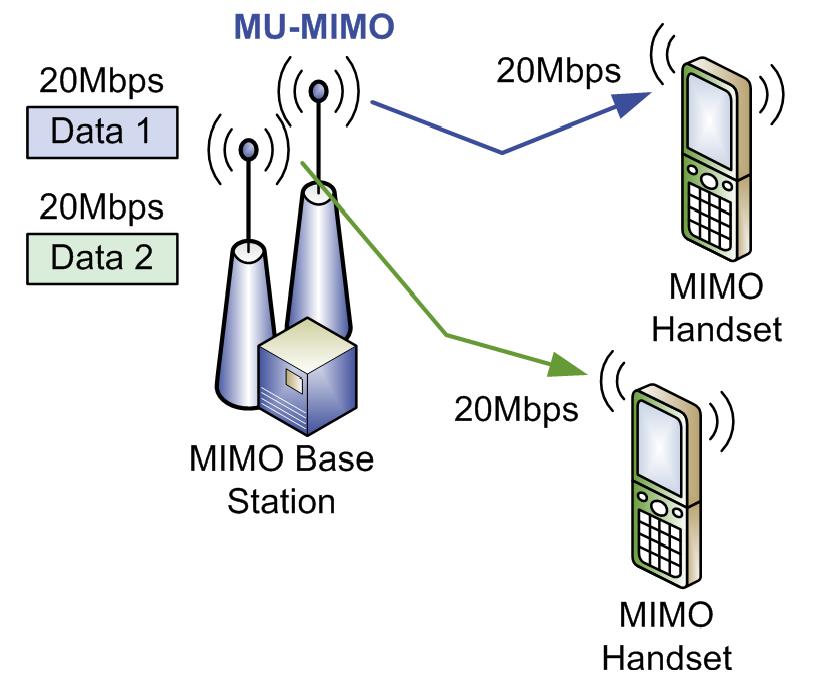MU-MIMO is widely considered a key technology for system capacity improvement in modern wireless networks.
In contrast to SU-MIMO, where the spatial multiplexing gain is confined to a single user, MU-MIMO allows multiple users to be co-scheduled on the same time-frequency resources to exploit this gain among two or more UE units. This is particularly beneficial as high-rank SU-MIMO transmission is often limited by the number of antennas and antenna design constraints at the user end, whereas high-rank transmission using MU-MIMO is more feasible due to the scattered user distribution.
It is well known that the information theoretic optimal MU-MIMO scheme is dirty paper
coding (DPC), which unfortunately is a nonlinear/ non-causal beamforming scheme and therefore unrealistic in real-life applications.
From a practical deployment point of view, the most critical issue for MU-MIMO in LTE is to strike a balance among MU performance gain, CSI feedback overhead, a low-complexity transceiver design, as well as an efficient scheduling methodology.

Consideration of the commercial deployment of MU-MIMO includes the following aspects.
Channel model: As MU-MIMO primarily relies on spatial domain separation for user multiplexing, environments with sufficient user separation are most suitable. Fortunately, this is usually the case in commercial LTE deployments where UE units are distributed in a geographically scattered manner. In addition, the angular spread at the eNB side imposes a nontrivial impact on MU-MIMO performance. Propagation channels with a lower angular spread tend to create narrower antenna beam patterns, which are beneficial for user separation and MUMIMO communication.
eNB antenna configuration: The performance of any multi-antenna scheme heavily depends on the antenna configuration. For SU-MIMO, widely spaced antennas and cross-polarized antennas reduce the spatial correlation and usually result in good SU-MIMO performance. However, wide antenna spacing is considered a serious challenge for most commercial base station designs.
On the other hand, MU-MIMO is found to perform particularly well in highly correlated antenna setups, which create narrow antenna beams critical for space-division multiple access (SDMA). Therefore, MU-MIMO is a promising candidate for practical deployment.
Cell loading & traffic type: Deployment of MU-MIMO should also be jointly considered with the cell loading and traffic types. It is well known that the asymptotic capacity of MUMIMO broadcast channel scales as O (log log (K)) where K is the number of users. A highly loaded cell with a large number of users experiencing steady DL traffic (e.g., video streaming) provides more MU-MIMO grouping possibility and is considered more appropriate for MUMIMO transmission.